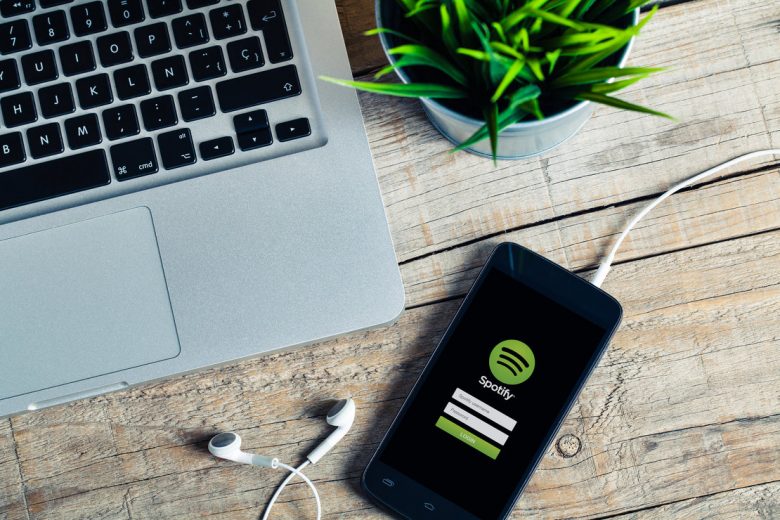Podcasting is a growing industry with an already substantial market size. The earning potential is therefore appealing for aspirant podcasters with room for existing players to size up. Often considered the ‘new radio’, podcasting has evolved from this traditional model into a format where listeners can search for topics that they’re interested in and listen to post-recording.
Podcasts also add value to an audience by offering show transcripts. Depending on what platform they’re hosted on, listeners have various listening options. They can do things such as adjusting the speed of the podcast or stopping and starting it to align with their schedules.
Popular podcasters are often thought leaders who offer alternative views on different subjects. However, a podcast of depth will add credibility to their opinion by featuring specialists to verify the information that they present. Another way that podcasters add meaningful content is by talking about polarizing and controversial topics.
Having looked at the bigger picture, let’s go into the details of how the podcast business model works.
The Most Influential Podcasting Platforms
The podcasting industry has seen substantial growth over the last few years, with several platforms emerging as leaders in the field. Here’s a look at some of the biggest podcasting platforms and an overview of their success:
- Spotify: Originally known for music streaming, Spotify has heavily invested in podcasts. It acquired several podcast networks like Gimlet Media and Parcast. Then, it began signing exclusive deals with popular podcasters. With its aggressive push into podcasting, Spotify aims to become the go-to platform for all audio content.
- Apple Podcasts: Apple Podcasts has been a dominant player in the podcast industry for years. It offers a vast library of podcasts across various genres, and its integration with Apple devices helps maintain a significant user base. While Apple doesn’t monetize podcasts directly, the platform’s success is reflected in its role as a major distribution channel for podcast creators.
- Google Podcasts: Google’s entry into the podcasting world aims to make podcasts more accessible across its ecosystem. This includes Android devices and Google Search. Google Podcasts has focused on leveraging Google’s technology to enhance podcast discovery and listening experiences.
- Amazon Music/Audible: Amazon has entered the podcasting space through both Amazon Music and Audible. While Amazon Music offers podcasts as part of its music streaming service, Audible has expanded into podcasts and exclusive audio content. Amazon’s vast customer base and integration with Echo devices present a substantial opportunity for growth in podcast listenership.
- Stitcher: Stitcher is a dedicated podcast app known for its extensive podcast catalog and original content. It offers a freemium model, with a premium subscription providing ad-free listening and exclusive content. Stitcher has been successful in attracting a loyal user base through its user-friendly interface and personalized recommendations.
Starting With the Customer in Mind
In most cases, podcasts start as passion projects. Many give little to no consideration to the business side of things. Meaning, they may not have thought about how they can podcast and turn it into a company. Having said this, the success of both startup podcasters and those who already have millions of listeners, depends on aligning their company with this business model by planning how to create revenue.
Sustainable podcasting businesses start doing this by having a value statement. The statement articulates what they’ll be bringing to the market that people will want to pay for. Knowing this also helps define their content strategy and target audience. Conducting market research to find out who their listeners are and what they want gives podcasters a better understanding of their problems to then be able to offer solutions to them.
This is in line with establishing the purpose of a podcast. For example, will it focus on topical issues such as current affairs? Or will the main points of discussion be about ‘lasting’ subjects that are more educational/ theoretical in nature such as history, or economics?
Key Resources and Activities for Podcasters
Existing podcasters already know what team size works for creating a well-rounded episode. Podcasters who, instead, are starting on their podcasting journey will have to consider who they’ll need to include in their staff complement to deliver a professional show. This business model will therefore need to incorporate key resources. Many will need audio engineers and show note writers as well as make provision for co-hosts and future guests.
Marketing a Podcast
In strategizing how one’s podcasting endeavors will create an income; this business model requires that podcasters establish a marketing plan. This function will either be allocated to someone in the team or outsourced. It usually depends on the existing resources of the company. Efforts in creating awareness about a specific offering might include setting up and maintaining social media profiles with links to a company website.
In establishing a rapport with potential listeners, podcasters may, instead, create a blog or newsletter. These marketing materials are usually more conversational content that they update regularly. Keeping the information they present relevant and up to date also boosts their online ranking, making it easy for people to find them.
Podcasts are also like radio in that, although their shows are not scripted word for word, the content is outlined in their show notes. The publishing of these becomes a marketing tool because they too, help make their podcast discoverable during word searches.
Further marketing activities used by podcasters include distributing audio clips that advertise the topics of upcoming shows or special guests. Marketers can also get creative. They can use tools such as QR codes. These can be strategically placed where the identified target audience may likely be found.
For example, a podcast aimed at parents may put their code in a parenting magazine that is freely distributed to pediatric practices. Considering relevant giveaways is another marketing avenue podcasters might engage in. This is where they partner with manufacturers or sellers of products to create brand awareness.
Read: 7 Ways to Drive Traffic to Your Podcast
Cost Structure and Revenue Streams
In general, the podcast model works on cash flow projections. This is where owners of this type of company identify startup costs. Some of those costs include equipment such as microphones, headphones, and recording space. Following this, entrepreneurs in this field forecast ongoing expenses. Some of these expenses include hosting and platform fees, necessary because these give podcasters the tools necessary to make money from the content they create.
Although there are several ways podcasters generate income, initially they might offer their services for free just to build a listenership. An essential part of any business, no less this model, is creating channels for getting feedback from its audience. This is to find out if their audience finds their offering valuable. If this is the case, they’re therefore in a strong position to ask for donations. This business model may then evolve to gain funding from its target audience.
It may be in the form of a freemium model where they offer the option of access to premium content such as exclusive interviews in addition to their standard offering for a fee. Other income streams include subscriptions, merchandising once you’ve built a brand, or selling products and services related to the podcast. For example, a history podcast might offer courses or books.
Here are the most common revenue opportunities for podcasters:
- Sponsorships: A business model incorporating this type of income stream is characterized by earnings being dependent on the number of episode downloads. To benefit from this, podcasters need to reach a certain threshold of listeners before they can get sponsorships.
- Advertising: Podcasters receive revenue from this channel in exchange for promoting products or services at different points in their podcast timeline. Usually, they earn more or less depending on whether they advertise at the beginning, middle, or end of the show. These promotions are calls to action and the hosts may voice the ad themselves to give it a personal touch.
- Affiliate/ indirect sales: This form of generating income is where podcasters feature links, in their show notes, to another website that has a connecting theme. For example, a language podcast might direct listeners to a platform that they can download learning resources from. In this instance, the podcaster earns a commission or set fee from the merchant making a sale from such referral.
Although podcasters may use one of the above, utilizing a combination of these would increase the bottom line and in turn fast-track their growth.
Disadvantages and Downside of the Podcast Business Model
The podcasting business model, while innovative and providing a unique platform for content creators, faces several challenges and limitations that can affect its sustainability and growth. This section explores the disadvantages and downsides of the podcast business model, detailing various aspects that contribute to its complexities.
Limited Revenue Streams
One of the primary challenges facing podcasters is the limitation in revenue streams. While advertising and sponsorship deals provide a significant portion of income for successful podcasts, not all podcasts are able to attract enough listeners to become appealing to advertisers.
This leaves many podcasters relying on a limited number of monetization options. Because of this, they may look into revenue options such as listener donations, subscriptions, or merchandise sales. However, these may not be sufficient to sustain the production costs. The heavy reliance on advertising also makes podcasts vulnerable to market fluctuations and changes in advertiser preferences.
For the platforms, this also is a concern. For example, Spotify has invested over $1 billion into its podcasting business over the years. However, as of the publishing of this article, it has yet to make a profit from that side of the business.
High Saturation and Competition
The podcasting industry has seen exponential growth, leading to high saturation and competition within the market. With minimal barriers to entry, anyone with basic recording equipment and internet access can start a podcast, resulting in millions of active podcasts available to listeners.
This oversaturation makes it increasingly difficult for new and existing podcasts to stand out and grow their audience base. As a result, many podcasts struggle to achieve significant listenership, limiting their success and viability.
Discoverability Challenges
Related to the issue of saturation is the challenge of discoverability. Despite the availability of podcast directories and platforms, finding new and relevant content can be daunting for listeners, and the algorithms that power these platforms often favor established shows with large audiences.
This creates a feedback loop where popular podcasts become more accessible, while newer or niche podcasts are harder to discover. For podcasters, this can mean investing considerable effort into marketing and promotion, which may not always yield proportional returns.
Production and Maintenance Costs
Producing a high-quality podcast requires not only time and dedication but also financial investment in equipment, editing software, hosting services, and potentially, a production team. These costs can add up, especially for independent creators who may not have the initial capital or steady revenue to support ongoing production.
Additionally, maintaining a podcast involves regular content creation, which can be a significant time commitment and may lead to burnout, especially for those balancing podcasting with other professional endeavors.
Intellectual Property and Content Risks
Podcasters also navigate complex intellectual property landscapes, where the risk of inadvertently infringing on copyrights or dealing with disputed content claims can have legal and financial implications.
Also, there is an open nature of podcasting. Oftentimes, topics ranging from the innocuous to the controversial are discussed. Sometimes this can lead to backlash, controversy, or even legal challenges, depending on the content broadcasted. One of the most famous podcasters in the world, Joe Rogan was forced to apologize after artists began removing their music from Spotify after Rogan’s comments about COVID-19 and vaccines. Navigating these risks requires diligence and often legal advice, adding another layer of complexity to podcasting.
Audience Engagement and Retention
Finally, building and maintaining an engaged audience is a continual challenge in podcasting. Audience preferences can change rapidly. Now that there are so much content to choose from, listener loyalty is not guaranteed.
Podcasters must consistently produce compelling, high-quality content and effectively engage with their audience across various platforms to retain their listenership. This demands a strategic approach to content planning, marketing, and community engagement. This can be daunting for creators who may already be stretched thin managing the production aspects of their show.
Conclusion
The podcasting business model operates in the same way as most companies do. Having a value proposition becomes the launching pad to greater heights. This is true whether you’re a new kid on the podcasting block or you’ve been on the scene for a while. Honing in on listeners’ needs and defining an offering also ensures the longevity of this model.
There are millions of registered podcasters around the world. Ensuring the commercial success of this model also depends on budgeting and having the necessary human resources in place for sustainability. Having a clear marketing strategy in place will not result in a profitable business overnight. Also, seeing returns may take a while. However, the success of the model comes down to building a brand to garner a significant following and secure profits.
Also read:













